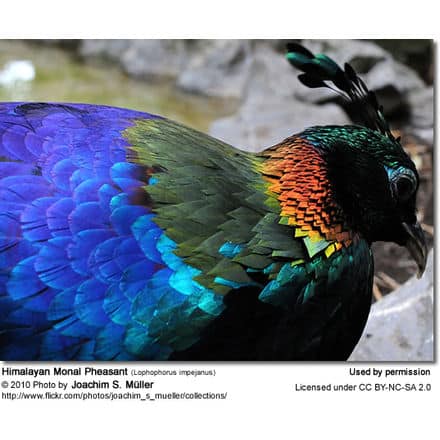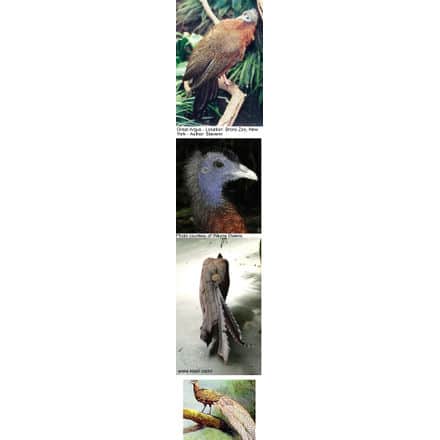Temminck’s Tragopans
The Temminick’s Tragopans is one of 5 species of Tragopan pheasant. It is a medium-sized pheasant that lives at high altitudes in the Eastern Himalayas, Southern Tibet, Myanmar, and some surrounding areas.
Note: The Temminick’s Tragopans Pheasant is widespread throughout forests of northern South Asia. Its range stretches from northeast India, northwest Vietnam, Tibet, and northern provinces of China.
Description:
The Temminck’s Tragopans is a medium-sized, up to 64cm long, stocky red pheasant with white spotted plumage, black bill, and pink legs.
The Temminck’s Tragopans cock is an extremely bright-colored bird, mostly a rich shade of orange smothered with whitish ocelli.
He has a gorgeous blue face surrounded by black. Like all the Tragopans he has an amazing display and can inflate a pair of “horns” from his crown and a bib from the throat.
Other Related Web Links: Pheasant General Information … Pheasant Species … Pheasant Taxonomy … Breeding Pheasants … Pheasant Photo Gallery … Housing Pheasants … Pheasant Diseases … Peacock Information … Peafowl Species List
The “bib” or lappet is particularly vivid with red and blue markings.
The female is a white-spotted brown bird with blue circular eye skin.
Its appearance resembles the Satyr Tragopan, but unlike the latter species it has all red upperbody plumage and orange collar.
Housing:
These birds are extremely hardy and are easy to keep in a medium to large aviary. We have pairs that seem perfectly happy in aviaries 24′ X 12′. They like some high perches and unlike many pheasants will use an elevated nest box.
Diet:
We give them the same pheasant pellets to eat as the rest of our birds as well as a portion of fruit and berries and a small amount of grains.
(Note: Its natural diet consists largely of berries, grass, and plants.)
Breeding:
The birds will breed in their second year and the hen will start to lay in April. Usually, 2 – 4 eggs are laid in a clutch, and up to 12 eggs in a season. Incubation is normally 28 days.
If you are looking for an unusual bird with a quiet nature which very easily becomes tame you have found what you are looking for with the Temminck’s Tragopan.
If you have the space to accommodate them they are a pure treasure to keep
Keeping and Breeding the Temminck’s Tragopan Pheasant
Courtesy of Alan Downie and Zoë A. Hunter
Allandoo Pheasantry – Breeders of Ornamental Pheasants in Southwest Scotland





